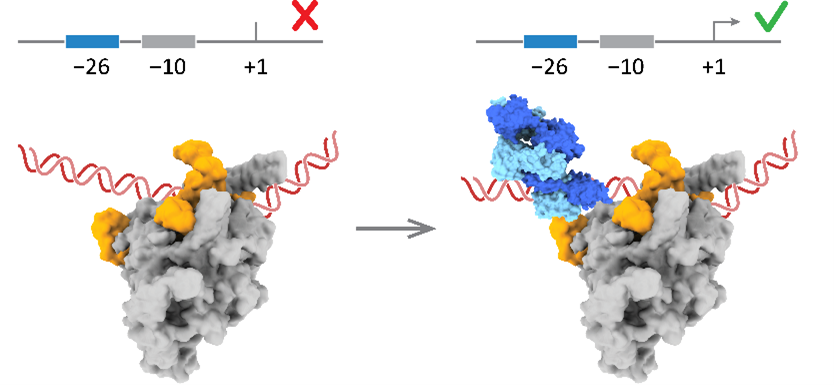Single-stranded DNA binding to PafBC triggers the mycobacterial DNA damage response
A new study published in “Science Advances” by the Weber-Ban group (IMBB), in collaboration with members from the Glockshuber group and the cryoEM knowledge hub, uncovers how the mycobacterial DNA damage response is triggered through allosteric activation of the transcription factor PafBC by ssDNA binding.

Mycobacteria constantly face threats to their hereditary material, including UV radiation, toxins, host defense mechanisms and DNA-damaging antibiotics. To maintain genome integrity and ensure survival, they respond by inducing DNA repair genes. The mycobacterial DNA damage response is biomedically highly relevant, as it plays a crucial role in the development of antibiotic resistance. Most of these repair genes are regulated by PafBC, a transcription factor belonging to the WYL domain-containing protein family. PafBC activates its target genes by reprogramming the housekeeping RNA polymerase holoenzyme to recognize PafBC-dependent promoters - a mechanism known as sigma adaptation. However, how DNA damage is sensed and translated into PafBC activation has remained unclear.
By combining biochemical experiments with structural analysis, the researchers found that PafBC is activated by single-stranded DNA (ssDNA), a hallmark of DNA damage. Using cryo-electron microscopy, they revealed how a single ssDNA molecule bridges the two WYL domains of PafBC, stabilizing the transcription factor in the active conformation. These findings provide new insights into the regulatory roles of WYL domain-containing proteins and unravel the link between DNA damage and the activation of the mycobacterial DNA damage response. Given the role of DNA repair in antibiotic resistance, understanding these mechanisms not only deepens our knowledge of bacterial survival strategies but could also aid in the development of new antimicrobial therapeutics.
Link to the paper in external page "Science Advances".